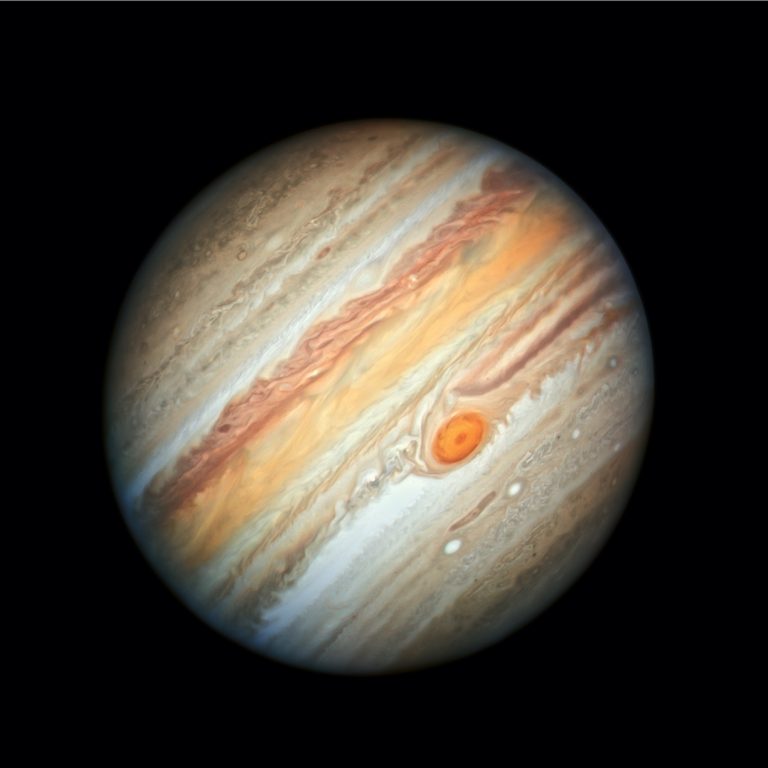Be sure to observe Jupiter this week, during its finest apparition of a lifetime.
You’ve never seen Jove like this. Jupiter opposition season for 2022 is upon us tonight, as the King of the Planet shines rising in the east opposite to the setting Sun in the west. This is the very best time to catch Jupiter and its retinue of moons, as they dominate the sky throughout the night. And although Jupiter reaches opposition as seen from the Earth nearly every year, this one is special as it’s the closest to the Earth in our lifetimes, and the nearest for the 21st century.
In fact, at 591 million kilometers (367 million miles) this is the closest approach of Jupiter to the Earth in 59 years, just shy of the average ~600 million kilometers usually quoted for opposition. You have to go alllll the way back to October 8, 1963 to find one closer. In fact, tonight’s opposition won’t be topped until (mark your calendars) next century, on October 7th, 2129. Tonight and for the remainder of the 2022 opposition season, Jove shines at a bright magnitude -2.9 and presents a disk 49.9” across.
Jupiter currently sits in the constellation of Pisces the Fishes, next the northward equinoctial point. Jove also crosses the celestial equator northward today, just nine hours prior to opposition. This means that future oppositions will now begin to favor the northern hemisphere until late 2028.

The orbit of Jupiter versus Earth in 2022 both conspire to make this opposition a close one. We just passed aphelion for Earth in July, and Jupiter passes opposition today on September 26th, 2022 at ~19:00 UT/3:00 PM EDT… just four months prior to perihelion.

Jupiter ranges from a perihelion 741 million kilometers from the Sun, out to an aphelion 816 million kilometers distant. The planet reached aphelion on February 18, 2017, and passes perihelion on January 20, 2023, respectively. Jupiter orbits the Sun once every 11.86 years, meaning that oppositions move about one constellation westward along the zodiac every year. Jupiter is also a fast spinner, rotating once every 10 hours. This means that you can see Jupiter complete a full rotation in a single night.

The first thing that becomes noticeable at the telescope eyepiece are Jupiter’s cloud bands and the four large Galilean moons of Io, Europa, Ganymede and Callisto. Jupiter and its moons cast their shadows nearly straight back at opposition. Also of note, Callisto—the outermost Galilean moon and the only one that can ‘miss’ Jove on occasion—ended its current series of shadow transits this week. Still, it’s fun to see the moons change positions as they orbit Jove from night to night. You’re seeing the same view that confounded Galileo, leading him realize that everything in the solar system does not revolve around the Earth.

Also, if it’s turned Earthward, keep an eye out for the storm known as the Great Red Spot. The storm has shrunken in the 21st century, down to about a third of its ‘greatness’ from centuries past. To our eye, ‘the spot’ is now more of a brick-to-salmon color, versus true red.
Don’t miss the closest opposition of Jupiter for our lifetimes this week, coming to a sky above you.
Lead image credit: Jupiter imaged by Hubble in 2019. Credit: HST/STScI/GSFC

